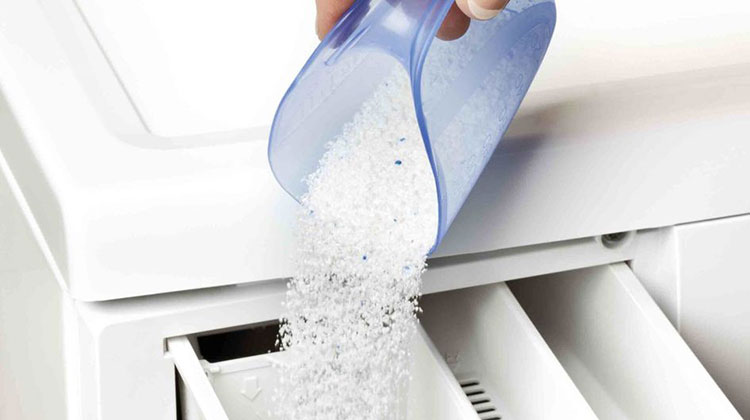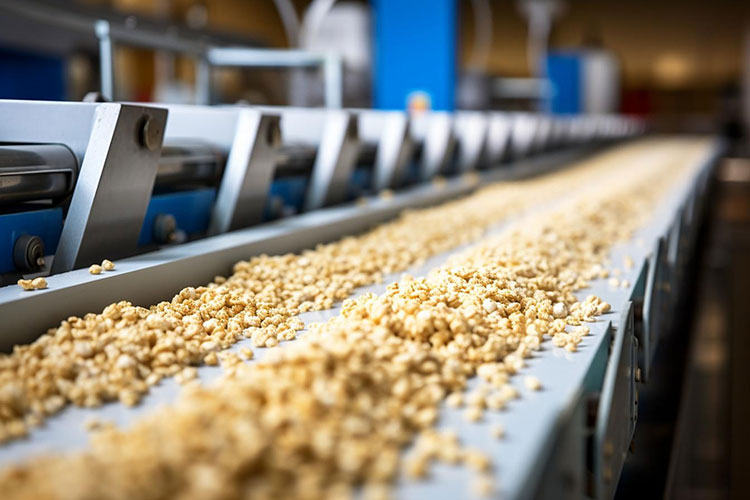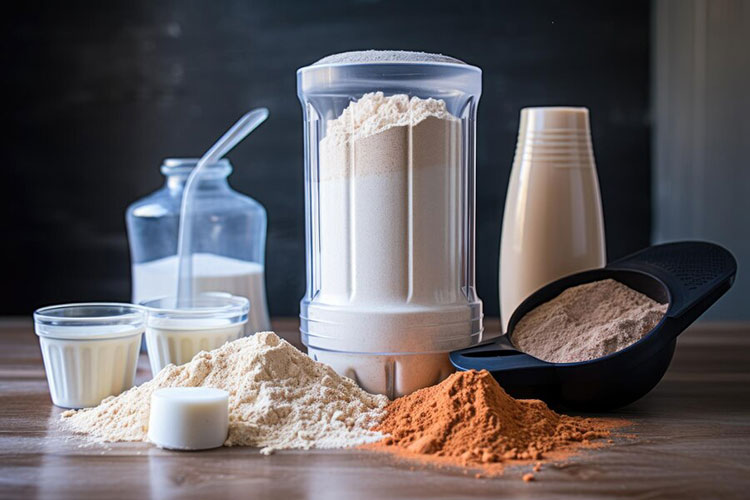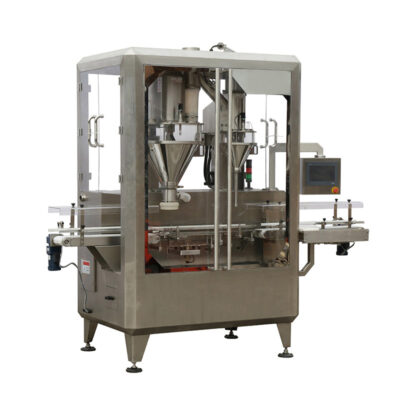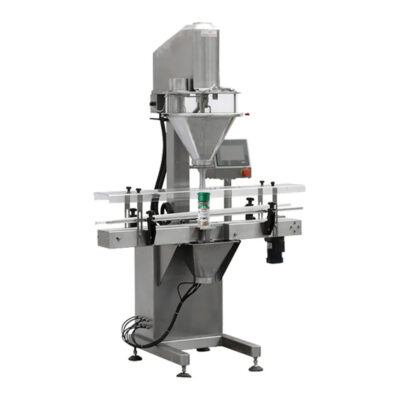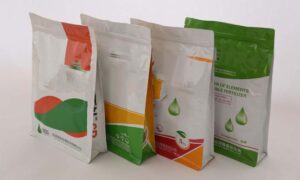Flowability of Powder: What Do You Know Will Define the Process Performance
Why do some powders flow smoothly? Why does your powder product turn into a clumpy pile? Powders are versatile solids that engraved their path in numerous diverse applications- from developing tablets or filling capsules to baking cakes or bread to washing materials or forming additives and pigments.
Their utility is based on their flowability. The fate of the manufacturing process usually rests on the flow behavior of powders. It has a significant effect on process efficiency, production uptime, product quality, consistency as well as operational cost. What governs powder flowability? Are unseen factors influencing its fluidity?
Discover the secrets behind the science of the flowability of powder with this informative article “Flowability of Powder: What Do You Know Will Define the Process Performance”. We will uncover various facets of the flowability of powders, why it matters, and how can you optimize it for seamless process performance. Let’s get flowing!
1.What is the flowability of powder?

Flowability of powder- Picture Courtesy: BAM
It is also referred to as the flow of powders is a vital characteristic of powders and by which they can drift or flow through a wide array of devices seamlessly or effortlessly. Various kinds of forces, for instance, gravity, vibration, or agitation are applied to facilitate the smooth flowability of powders.
The consistent and efficient fluidity of powder is necessary for immaculate handling, processing, and, transportation. The particle size, geometries, humidity proportion, electrostatic charges, density, and, distribution of powders determine the flowability of powder.
The even flow of powder also helps in homogenous mixing, compression, dosing, and successful manufacturing in diverse industries, such as pharmaceutical, food, chemical, etc.
2.Why is the flowability of powder crucial in manufacturing processes?
The flowability of powder is the backbone of successful and continuous formulation and production processes. Why is that? It significantly influences every stage of raw feed preparation and processing and has a major impact on operational stability and optimal return on investment. Now, let’s debate on various key reasons as to why the flowability of powder is crucial in industrial operations.
Uniform Product Quality
Uniform Product Quality- Picture Courtesy: Indpro Engineering Systems
If you have an unvarying flowability of powder, then it’ll translate into its optimum mixing and dosing. Thus, consistent mixture and precise dosing of powders help you to attain even product efficacy and form. On the other hand, variability in the flowability of powder is normally the basis for powder separation, non-homogenous mixture, and subpar tableting process.
Maximize Uptime
Maximize Uptime- Picture Courtesy: Food Network
What is the connection between the flowability of powder and uninterrupted processing? Well, with the free-fluidity of powder, you can boost continuity in your operations and maximize uptime by averting the multitude of anomalies, for instance, blockage in the flow of powders, arching, or ratholing. These hitches augment the chances of production standstill and equipment damage.
Boosts Process Outcome
Boosts Process Outcome- Picture Courtesy: Lexica
The outcomes of diverse industrial processes rely on the smooth flowability of powder. Its optimal speed and steadiness are attributed to excellence in blending, loading, coating, granulating, and compression.
Minimal Product Loss
Minimal Product Loss- Picture Courtesy: Cleveland Vibrator Company
By achieving precision in the flowability of powder, you can avoid numerous issues related to product wastage. With an even flow of powdery materials, there will be less chance of spillage, dust production, and powders left in devices. Moreover, with the favorable fluidity of powders, you can also prevent particulate and cross-contamination between batches.
Adherence to Regulatory Protocols
Adherence to Regulatory Protocols- Picture Courtesy: Brighto Chemicals
Yes, the flowability of powder is directly correlated with compliance with regulatory guidelines. Why? Poor powder fluidity impacts product quality due to irregular dosing, tablet defects, and capsule encapsulation issues, consequently affecting the potency of medications. This leads to non-compliance, product rejection, and monetary fines. However, you can control these issues by improving the flow characteristics of powders.
3.What are the causes of poor flowability of powder?
Are you pondering about the reasons for the unfavorable flowability of powders? Irregular powder flow and blockage in powder movement are owing to numerous reasons that are mentioned below:
Bridging
Bridging- Picture Courtesy: Indpro Engineering Systems
In the bridging phenomenon, the powder mass together creates a compacted arch at the top of the hopper discharge opening, which hinders the free movement of powders. There are several causes of bridging or arching, for instance, strong particle-particle forces, asymmetrical or non-uniform particle shape, as well as, lower vibration rate.
Ratholing
Ratholing- Picture Courtesy: Indpro Engineering Systems
It is a frequent flow issue, occurring in storage devices, such as hoppers, bins, or silos. This phenomenon typically happens when powder flows through a narrow passageway or rathole in the middle of a container. The surrounding powder stays immobile while the powders in the center are moving through the channel. The hoppers with steep surfaces or poor aeration of powder contribute to ratholing.
Caking
Caking- Picture Courtesy: Bulk Solids
It is the event in which powders agglomerate or mass together to create lumps or clumps. This caking is a significant reason for an impasse in uniform powder flow. Increased humid conditions or high pressure during storage cause caking.
Segregation
Segregation- Picture Courtesy: ALPA Powders
It is another source of poor flow of powder and happens due to the separation of various-sized particles in powders or particles differing in densities during handling. This produces irregularities in powder composition. Variations in particle characteristics, incorrect mixing approaches, or intense vibrations during shipment lead to powder segregation.
Static Build-up
Static Build-up- Picture Courtesy: ALPA Powder
The powder particles acquire static charges, consequently, they stick to hopper or feeder surfaces or clump together due to electrostatic forces. This hampers the movement of powder. A dry environment usually in the winter season leads to the generation of static electricity and results in insufficient powder flow.
4.How do powder characteristics affect the flowability of powder?
The flowability of powder is strongly influenced by its physical and chemical properties. By what means is this achievable? Interaction, bonding, and dispersal of powder particles are governed by their traits. So, let’s have a deeper look at its characteristics and their relation with the flowability of powder.
Particle Size
Particle Size- Picture Courtesy: Silica Specialist
It is the main factor that influences the flowability of powder. For example, if the powder particle size is less than <100 µm, then due to higher surface area for cohesive force, the powder will have reduced fluidity. These particles will often clump or agglomerate together. Alternatively, it is observed that larger particles tend to have a high flowability rate due to minimal cohesive forces between them. However, very large-sized particles interlock together and obstruct fluidity.
So, particles of powders must have a balanced size range to have an ideal flow.
Particle Shape
Particle Shape- Picture Courtesy: FFECO International
The particles with spherical shapes have a high flow rate owing to their smooth surfaces. These surfaces are pivotal in minimizing interparticle frictional forces. Whereas, particles that have irregular surfaces or angular planes have increased chances of interlocking because of high frictional forces. So, particles will rough edges have difficulty in flow.
Particle Density
Particle Density- Picture Courtesy: Atlas Bar
It also influences the flow behavior of powders. If your powdery materials are fluffy and have low density, then they can absorb air from the surroundings, resulting in hindrance in flow. While, high-density powders have better flowability, as they trap a minimal amount of air.
Cohesion and Adhesion
Cohesion and Adhesion- Picture Courtesy: AZoM
They are two attractive forces that affect the movement of powders. Cohesive force is due to particle-particle interaction, for instance, van der Waal or electrostatic forces. Free movement of powders is stalled due to strong cohesive force between particles. Adhesion is the force produced by the interaction of powder particles with the surface of the storing device, such as hoppers.
Intense adhesion force causes particles to adhere to the planes of containers and block the flow of powders.
5.Can environmental factors significantly impact the flowability of powder?
In short answer yes. Environmental factors are the fundamental cause of hampering in flowability of powders. They disturb the physical and chemical profile of powders, thereby, disrupting their free movement during processing. Let’s read about the association between environmental conditions and the flowability of powder.
Humidity
Humidity and Powders- Picture Courtesy: Omya
It is discovered that due to high humidity in the immediate vicinity, the powders can absorb moisture, producing clumping or caking; hence, decreasing the consistent flow of powders. In contrast, a dry environment leads to dryness of powders and tends to build up static electricity owing to which particles cling with each other and also with the surface of solid items.
Temperature
Temperature and Caking- Picture Courtesy: Jenike & Johanson
How does temperature influence the flow of powders? Well, with high temperatures, you’ll observe that powders (waxes or resins) become soft or gooey, consequently, sticking to surfaces and losing their free-flowability. Temperature alterations have also a significant association with moisture-related problems.
Aeration
Aeration and Powders- Picture Courtesy: Humiscope
With heavier airflow, the powders like cement have uncontrolled flowability issues, as they become fluidized and generate dusting. Inadequate aeration brings about compaction of powders, thereby, obstructing their movement.
Vibration
Vibration- Picture Courtesy: Heat and Control
A high rate of vibrations during shipment or handling of powder clumps them, particularly ultra-fine or cohesive powders. And prolonged exposure to vibrations results in powder separation in which larger particles travel to the surface of the container and smaller ones tend to deposit at the bottom.
6.What are the key parameters for measuring the flowability of powder?
How easily a powder can flow? This question is answered by measuring the flowability of powder. It is estimated by specific parameters to determine the consistency in the fluidity of powder under different processing conditions. So, to optimize the flow behavior of powders, we are explaining various key parameters for assessing the flowability of powders.
Angle of Repose
Angle of Repose- Picture Courtesy: New York Magazine
It is the critical slope angle at which the mass of powdery material remains stabilized without breaking apart. You can easily estimate the angle of repose of powders by dropping their specific volume from a certain height onto a flat surface. The diameter and height of the powdery cone offer an estimation of the angle of repose. If this angle is less than 30°, this indicates good flowability. However, an angle of more than 40°, shows poor flowability.
Compressibility Index
Compressibility Index- Picture Courtesy: Reddit
It is the ability of powder to compress with the application of compaction force. It is calculated by two parameters- bulk density and tapped density. When powders are loosely contained in the cylinder, then their mass in a given volume is known as bulk density. Low bulk density powders have less fluidity, as they trap more air.
The mass of a powder per unit volume after it has been tamped by tapping force is called its tapped density. It shows the tight packing of powders under external influences. The compressibility index is determined by the formula:
Compressibility Index = [(Tapped Density - Bulk Density) / Tapped Density] x 100%
A low compressibility index of less than 15% shows excellent fluidity of powders. While a high compressibility index of powders greater than 25% specifies poor flow.
Hausner Ratio
Hausner Ratio- Picture Courtesy: Bayas del Sur
It is defined as a proportion of the tapped density of powder to its bulk density.
Hausner Ratio = Tapped Density / Bulk Density
If you’ve got a lower Hausner Ratio, then it denotes your powders have better flowability. They can easily flow and are less interconnected. However, a high Hausner ratio suggests there is a high rate of bonding between powder particles, so they’ve difficulty in flow.
Flow Rate Through an Orifice
Flow Rate Through an Orifice- Picture Courtesy: SOTAX
It measures the duration through which a certain amount of powder goes across the orifice of a defined size. The density and cohesivity of powder impact its flow rate through an orifice. A steady flow of powders through a minute opening shows that powders have good flowability.
Shear Cell Testing
Shear Cell Testing- Picture Courtesy: Merlin Powder Characterisation
It is a testing approach to assess the capability of powder under a stress environment. A shear cell consists of two plates between which powders are held. A shear force is exerted on one end of the plates to shear powder particles.
Angle of Spatula
Angle of Spatula- Picture Courtesy: Jacked Factory
It is an indicator of the flowability of powder and measures the ability of powder to tolerate cohesive bonding between particles and move freely. It is measured by the horizontal insertion of the spatula into the powder mass and the former is elevated vertically without moving the powder off from it. The lower angle of the spatula indicates good flowability of powder because there is less likelihood of caking. Conversely, the higher angle is generally owing to poor flowability.
7.What instruments are utilized to assess the flowability of powder?
You require special instruments for determining the flowability of powder. They are useful in assessing the mechanical and chemical traits of powders. Here is a list of instruments that you may find handy to assess the flowability of powder.
Flow Funnel
Flow Funnel- Picture Courtesy: Teledyne Labs
It is also called a hall flowmeter and estimates the flowability rate of powder through an opening. First, the powder is put into a funnel with a custom-sized opening, and the interval through which a certain volume of powder is passed through an orifice is recorded.
Powder Rheometer
Powder Rheometer- Picture Courtesy: Micromeritics
This instrument is utilized in research and development industries to evaluate the mechanical behavior of diverse powder types under a stress setting. It analyzes cohesion forces, compressibility index, and flow characteristics of powders.
Angle of Repose Apparatus
Angle of Repose Apparatus- Picture Courtesy: LFA Machines
This device evaluates the steep angle or angle of response- created due to the flow of powder. This apparatus uses a funnel to allow free fall movement of powder on an even surface. This flow results in a cone-like pile. The angle formed between the slope of the cone and the flat plane is estimated and gives value for the angle of repose.
Shear Cell Tester
Shear Cell Tester- Picture Courtesy: Ajax Equipment
There are various kinds of shear cell tester, for example, direct shear tester, annular ring shear tester, and, torsional shear cell. The powders are placed in a shear cell tester, whether a cylinder or annulus and are exposed to high shear forces, like vibration or rotation. Then their flow behavior is estimated. These shear forces mimic the conditions in hoppers or silos. The results of this testing allow to design tailored hopper or silos.
Tap Density Tester
Tap Density Tester
This device is beneficial in assessing the tapped and bulk densities that are then employed for estimating the powder flow indices, such as Carr’s Index and Hausner Ratio. This instrument consists of a graduated cylinder in which a powder sample is poured and tamped by hand until its quantity is stabilized.
Cohesion Tester
Cohesion Tester- Picture Courtesy: Bettersize
This equipment, as the name suggests, is used for determining the cohesive forces of powders. It consists of a load cell or force-sensing device that appraises the force needed to fracture a lump or agglomerate of powders.
8.What are the safety concerns related to the flowability of powder?
People usually think of the poor flowability of powder as an operational issue but it is not the case. It also presents severe safety hazards in the raw feed processing sector and manufacturing unit. These safety concerns are mentioned below for your knowledge:
Explosion Risks
Explosion Risks- Picture Courtesy: Oizom
The deficient flowability of powder is the main reason for the generation of dust clouds during processing, handling, and shipment. These dusty particles are suspended in air, and attract electrostatic charges, consequently, instigating explosive settings in facilitates. Flour, sugar, and pharmaceutical powders are well-known for their dust generation.
Respiratory Problems
Respiratory Problems- Picture Courtesy: Healio
The creation of airborne particles during powder handling poses inhalation risks and breathing problems. Inhalation of toxic or allergenic particles in food, chemical, and pharmaceutical sectors can lead to a wide range of health issues, from mild irritation of airways to chronic lung disorders, such as lung cancer, asthma, or, emphysema.
Cross-contamination
Cross-contamination- Picture Courtesy: Prodigia Cosmetics
Poor flow of powders results in their sticking to the processing devices and may leave hard-to-clean materials. This translates into cross-contamination between batches and compromises the sterility and safety of consumable foods and medications.
9.How to manage challenges associated with the flowability of powder?
The flowability of powder is a chief source of interruptions in a seamless production flow. Inconsistent flow or clumping poses a huge challenge for manufacturers. Addressing these challenges is pivotal for controlling productivity and optimizing final product quality.
So, it is fundamental to learn about its underlying causes and apply targeted approaches to increase the flow of powders. We are detailing some strategies that will help you in tackling these challenges successfully:
Optimize Powder Properties
Optimize Powder Properties- Picture Courtesy: Bulk Solids
First and foremost, it is recommended to control the size distribution of particles in powders. This is done using milling or sifting techniques. Narrow size distribution will improve the flow of powders. Granulation or spray drying is ideal for creating particles with rounder shapes and balanced densities, Thus, these powders will move more consistently.
Regulation of Moisture Level
Regulation of Moisture Level- Picture Courtesy: Standford Advanced Materials
Since the excess moisture content in powders is the reason for caking, therefore, you can manage moisture levels with the use of dryers or moisture absorbers. So, with the evaporation or absorption of moisture, you can avoid clumping, agglomeration, lumping, or, sticking.
Furthermore, you should shun the utility of extremely dry powders, because they will have a buildup of static charges. It is suggested to maintain the ideal humidity content in powders.
Utilize Flow Enhancer
Utilize Flow Enhancer- Picture Courtesy: Food Processing
You can conveniently improve the flow of powders with the application of anti-caking agents, glidants, or lubricants. Materials, for instance, silica, talc, and, magnesium stearate minimize interparticle cohesion, friction, and, particle stickiness to surfaces.
Customize Equipment Construction
Customize Equipment Construction- Picture Courtesy: seiwag-us
It is yet another approach to enhance the flowability of powder. For example, you can use a hopper with sharp angles or a feeder with flow-promoting designs to put a stop to bridging or ratholing. Similarly, vibrators, agitators, or aerators facilitate in flow of powders. Moreover, the blockage is also lowered by using larger-sized discharge openings.
Improve Handling Strategies
Improve Handling Strategies
Powder segregation is prevented by blending or mixing powders more uniformly. Secondly, lowering vibrations during cargo reduces powder separation. Do not over-fill powders or use excessive pressure, as they can consolidate powder and impair its flow.
Address Environmental Problems
Address Environmental Problems- Picture Courtesy: Making
It is necessary to control humidity and temperatures in the facilities by installing dehumidifiers, air ventilation systems, or air conditioning systems. It not only regulates moisture levels but also maintains steady temperatures, decreasing the sticking or softening of powders. Properly grounding machines or utilizing ionization devices to scatter electrostatic charges.
Conclusion
You are not alone in facing the woes of production delays, inconsistent mixing, or product loss due to poor flowability of powders. Understanding and perfecting the flowability of powder is not only a quality control step but also a fundamental gateway to attaining excellent product quality, production lucrativeness, or, minimal operational expenditures. Hopefully, you have learned vital measures to optimize the flowability of powder by reading this blog post “Flowability of Powder: What Do You Know Will Define the Process Performance”. You can select suitable flow aids, configure equipment design, or control environmental factors to make your powder flow smoother. For immediate assistance or further information, please contact AIPAK.
Don't forget to share this post!
Powder Filling Machine Related Products
Powder Filling Machine Related Posts
Powder Filling Machine Related Videos
CONTACT US
Tell us your raw material and project budget to get quotations within 24 hours.
WhatsApp Us: +86 189 7157 0951

Want the best price & newest pharmaceutical machinery buying guide,tips and trends sent straightly to your box?Sign up for AIPAK’s monthly newsletter,we’re free for your consultation and Offer you the most suitable solutions!
The Buyer's Guide
- Capsule Filling Buyer's Guide
- Blister Packaging Buyer's Guide
- Tablet Counting Buyer's Guide
- Tube Filling Buyer's Guide
- Cartoning Buyer's Guide
- Gummy Making Buyer's Guide
- CO2 Extraction Buyer's Guide
- Empty Capsules Buyer's Guide
- Suppository Filling Buyer's Guide
- Tablet Coating Buyer's Guide
- Tablet Press Buyer's Guide
- Softgel Encapsulation Buyer's Guide
Most Popular
- 7 Importance Of Pharmaceutical Packaging In Different Applications You Must Know
- 6 Advantages You Must Know About Tablet Counting Machine
- 8 Advantages of Blister Packaging You Must Know
- 6 Critical Applications of Automatic Capsule Filling Machine
- 6 Stations You must Know to Improve the Filling Quality of Automatic Capsule Filling Machine












